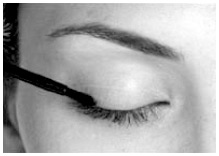Using Latisse Safety Info
If you're considering LATISSE® (bimatoprost ophthalmic solution) 0.03%, it's important to get all the facts first. You may have questions about how the treatment works, how soon you’ll see results, and the safety of the product. This site was intended to give you a basic understanding of the product, but you should ask your doctor to see LATISSE® is right for you.
Possible side effects.
The most common side effects after using LATISSE® are an itching sensation in the eyes and/or eye redness, which were reported in approximately 4% of clinical trial patients. LATISSE® solution may cause other less common side effects which typically occur close to where LATISSE® is applied. These include skin darkening, eye irritation, dryness of the eyes and redness of the eyelids.
If you develop a new ocular condition (e.g., trauma or infection), experience a sudden decrease in visual acuity, have ocular surgery, or develop any ocular reactions, particularly conjunctivitis and eyelid reactions, you should immediately seek your physician’s advice concerning the continued use of LATISSE® solution.
Special warnings.
LATISSE® solution is intended for use on the skin of the upper eyelid margins at the base of the eyelashes. Refer to the illustration below. DO NOT APPLY to the lower lid. If you are using LUMIGAN® ophthalmic solution or other products for elevated intraocular pressure (IOP), or if you have a history of abnormal IOP, you should only use LATISSE® under the close supervision of your physician.

LATISSE® solution use may cause darkening of the eyelid skin which may be reversible. LATISSE® use may cause increased brown iris pigmentation of the colored part of the eye which is likely to be permanent. While very infrequent, increased iris pigmentation has occurred when LATISSE® was administered.
It is possible for hair growth to occur in other areas of your skin that LATISSE® frequently touches. Any excess solution outside the upper eyelid margin should be blotted with a tissue or other absorbent material to reduce the chance of this happening. It is possible for a difference in eyelash length, thickness, fullness, pigmentation (darkness), number of eyelash hairs and/or direction of eyelash growth to occur between eyes (e.g., results may vary for each eye). These differences, should they occur, will usually go away if you stop using LATISSE®.
Some important application tips.
When applying LATISSE® solution, it's important to follow the complete directions. Here are a few simple things to keep in mind
• Do not apply in the eye or to the lower lid.
• Only use the sterile applicators supplied with LATISSE® to apply the product.
• Don't allow the tip of the bottle or applicator to touch fingers or any other unintended surface, as contamination by common bacteria is known to cause infections.
• Remove contact lenses prior to applying LATISSE®. Contact lenses may be reinserted 15 minutes afterward.
• Remember, if you stop using LATISSE®, lashes will gradually return to their previous appearance.
To learn more, ask your doctor and see the Product Information.
LATISSE® (bimatoprost ophthalmic solution) 0.03% Important Information
LATISSE® is a prescription treatment for hypotrichosis (inadequate or not enough lashes) to grow eyelashes longer, fuller, darker.
Important Safety Information
If you use/used prescription products for eye pressure problems, use LATISSE® under doctor care. LATISSE® may cause increased brown pigmentation of the colored part of the eye which is likely permanent. Eyelid skin darkening may occur and may be reversible. Only apply at the base of upper lashes. DO NOT APPLY to lower lid. Hair may grow on skin that LATISSE® frequently touches. If you have eye problems/surgery, consult your doctor about use of LATISSE®. Common side effects are itchy and red eyes. If discontinued, lashes gradually return to previous appearance.
You are encouraged to report negative side effects of prescription drugs to the FDA. Visit www.fda.gov/medwatch or call 1-800-FDA-1088.
Please click here to view the FDA's instructions on how to safely dispose of unused medicines.



